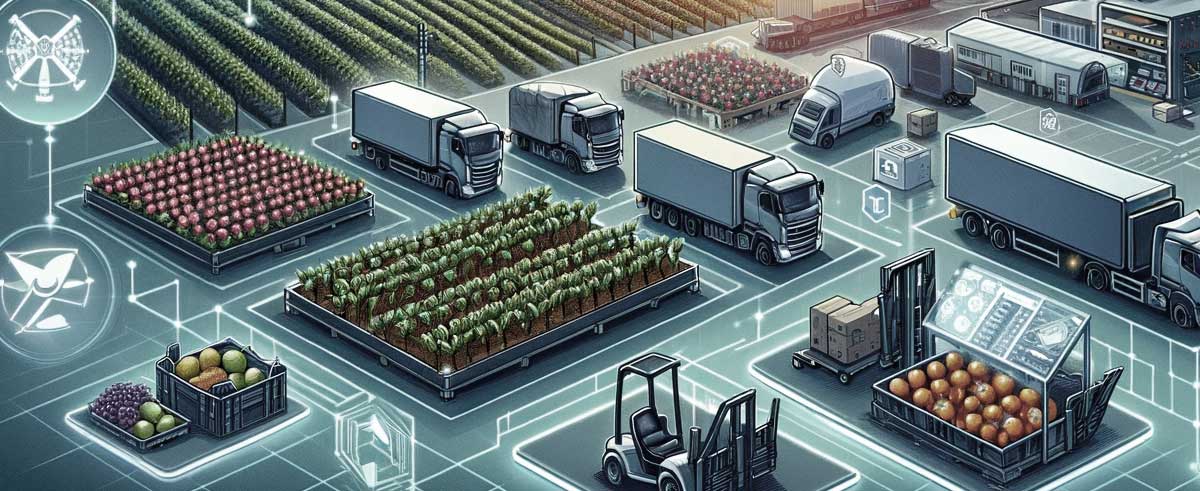Supply chain technologies in the food industry play a crucial role in enhancing efficiency, transparency, and safety from farm to fork. These technologies are transforming how food is produced, processed, distributed, and consumed. Here’s an overview of key supply chain technologies important to the food industry:
- Blockchain:
Blockchain technology is used for enhancing traceability and transparency in the food supply chain. It allows for secure and immutable tracking of food products at every stage, from production to retail. This helps in quickly tracing the source of food-borne illnesses, verifying the authenticity of products, and ensuring compliance with safety standards. - Internet of Things (IoT):
IoT devices, such as sensors and RFID tags, are used for real-time monitoring of food products during transportation and storage. These devices can track temperature, humidity, and other environmental conditions, ensuring that food is stored and transported under optimal conditions to maintain quality and safety. - Artificial Intelligence and Machine Learning:
AI and machine learning are used for predictive analytics in demand forecasting, inventory management, and route optimization. These technologies help in reducing food waste, improving stock management, and ensuring efficient distribution of food products. - Drones and Autonomous Vehicles:
Drones are used for agricultural monitoring, spraying pesticides, and even planting seeds. Autonomous vehicles and drones are also being tested for food delivery, especially in remote or difficult-to-reach areas. - Cold Chain Technologies:
Advanced refrigeration and cooling technologies ensure that perishable food items like fruits, vegetables, dairy, and meat maintain their freshness and nutritional quality during transportation. Innovations in packaging, like smart packaging that indicates the freshness level of the product, are also part of this. - Warehouse Automation:
Automated warehouse systems, including robotics and conveyor belts, streamline the sorting, packing, and dispatching of food products. This improves efficiency, reduces labor costs, and minimizes errors. - Data Analytics and Cloud Computing:
Data analytics and cloud computing enable the integration and analysis of large amounts of data from various points in the supply chain. This provides valuable insights for decision-making and helps in optimizing operations. - E-Commerce Platforms:
Online platforms and mobile apps are increasingly used for direct-to-consumer sales. This reduces the number of intermediaries in the supply chain, potentially lowering costs and improving product freshness. - 3D Printing:
Although still in its nascent stages, 3D food printing has potential applications in creating customized food products, particularly in the realm of complex food items and for specific dietary requirements. - Supply Chain Management Software:
Software solutions for supply chain management integrate various components of the supply chain, providing end-to-end visibility and control over operations. This includes managing supplier relationships, procurement, production planning, and logistics.
These technologies not only contribute to operational efficiency but also play a vital role in ensuring food safety and reducing waste. As consumer expectations around sustainability, ethics and health continue rising, they provide transparency into sourcing, transportation emissions, and nutrition. Instead of making claims, food companies can demonstrate substantive progress through data.
It’s not all rosy – some companies see impediments to getting the most out of these technologies. They include:
- There’s no real playbook yet for rolling out new innovations like blockchain, sensors, AI
- Warehouse and distribution staffers feel threatened by tech changes
- It can be hard to integrate fragmented data flows across old systems
- Lack of best practice guidance
- Workforce resistance fears
- Sometimes significant deployment and infrastructure costs
- Data integration difficulties
- Uncertainty justifying ROI – will the savings outweigh the costs?

